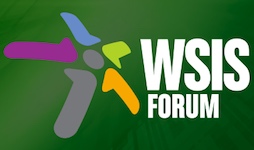Inclusive ICTs for disaster and emergency preparedness for persons with disabilities and those with specific needs
12 Jun 2017 09:00h - 10:45h
Event report
[Read more session reports from WSIS Forum 2017]
The moderator, Ms Andrea Saks (Chair, Telecommunication Standardisation Sector (ITU-T) Joint Coordination Activity on Accessibility and Human Factors (JCA-AHF)), welcomed the audience and introduced the five panellists, two of whom were remote participants.
The first speaker, participating remotely from India, was Ms Nirmita Narasimhan, Policy Director, Centre of Internet and Society (CIS). Narasimhan heads the CIS accessibility inclusion programme and specialises in policy research and advocacy related to technology access for persons with disabilities. Narasimhan focused on a report jointly prepared by ITU and CIS, on how to leverage ICTs in an accessible manner to ensure that persons with disabilities and other vulnerable groups are included in planning and responding to disasters and situations involving emergency situations. She raised four stages of preparedness for disaster management: (1) early warning planning including creating awareness, education, and training material as well as setting up technological infrastructure; (2) alerts as to when a disaster is happening and where to go for help; (3) recovery, what happens after the disaster; and (4) mitigation which leads back to planning and preparedness.
Mr Hiroshi Kawamura, President, Daisy Consortium, discussed the mobilisation of community capacity for Disaster Risk Reduction. He focused on the potential of ‘building back better’ (BBB) which arose out of the Third UN World Conference on Disaster Risk Reduction held in Sendai in 2015. BBB has been applied to disaster situations in the Philippines, Ecuador, and Nepal. Kawamura reinforced the importance of accessible community information, in particular for disaster preparedness, disaster response, and recovery. He continued to explain efforts to support community resilience and inclusive community development through community Internet protocol television (IPTV). This is complemented by Daisy ePub which provides affordable content production for accessible video content for local communities.
Mr Hiroshi Ota, ITU Advisor, is one of the leads in Study Group 15, which looks at networks, technologies, and infrastructure. His presentation centred on what ITU focus groups are doing to support emergency communications. He described several initiatives that are currently being implemented in the event of a disaster. They include a disaster message board service instead of using the telephone; a voice message service rather than text; and safety confirmation and broadcast message service that uses cloud technology, for those who are working on the ground to help survivors.
Mr Masahito Kawamori, ITU Rapporteur, Project Professor, Keio University, Japan, is responsible for ITU-T Question 26, Study group 16 which focuses on accessibility to multimedia systems and services. He emphasised the importance of standards for inclusive disaster risk reduction for persons with disabilities. He explained how nearly every year there is a major disaster somewhere in the world and that persons with disabilities are at risk of having more casualties than others during a disaster. The Nepal earthquake showed that not only persons with disabilities, but also the elderly were inadequately catered for. Kawamori emphasised that interactive, standardised, accessible, and inclusive Disaster Risk Reduction is of immediate need.
The final speaker was Ms Marcie Roth, President and CEO, Inclusive Emergency Management Strategies. She reinforced the importance of the Sendai Framework and the need for persons with disabilities to be fully engaged and included in the design and implementation of any disaster-related policies, plans and standards. Roth stressed the importance of ‘nothing about us without us’ and using language that influences behaviour and supports more positive attitudes, demonstrates commitment to universal accessibility for persons with disabilities.
by Maureen Hilyard
Related topics
Related event

